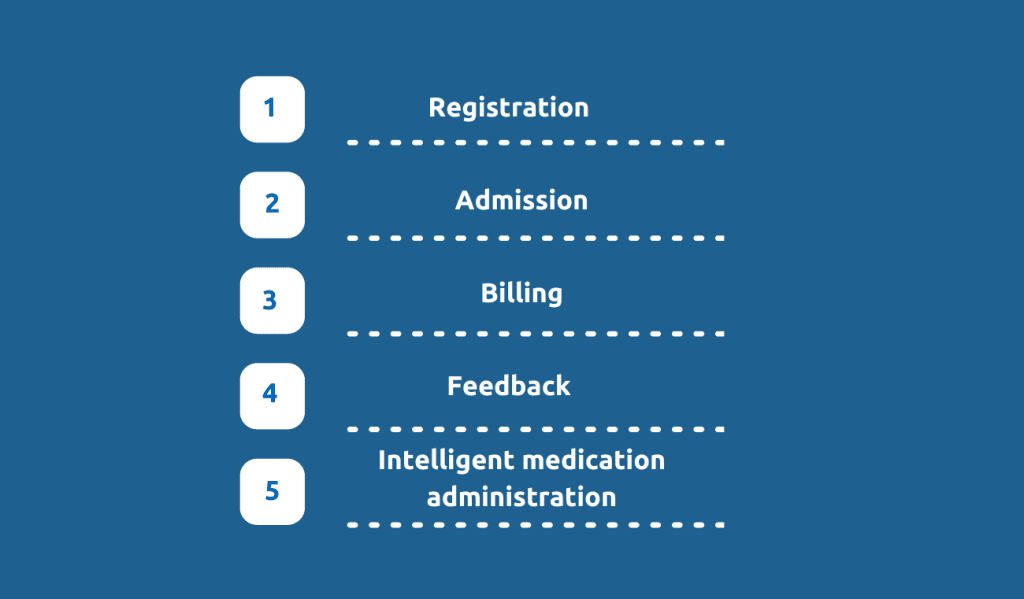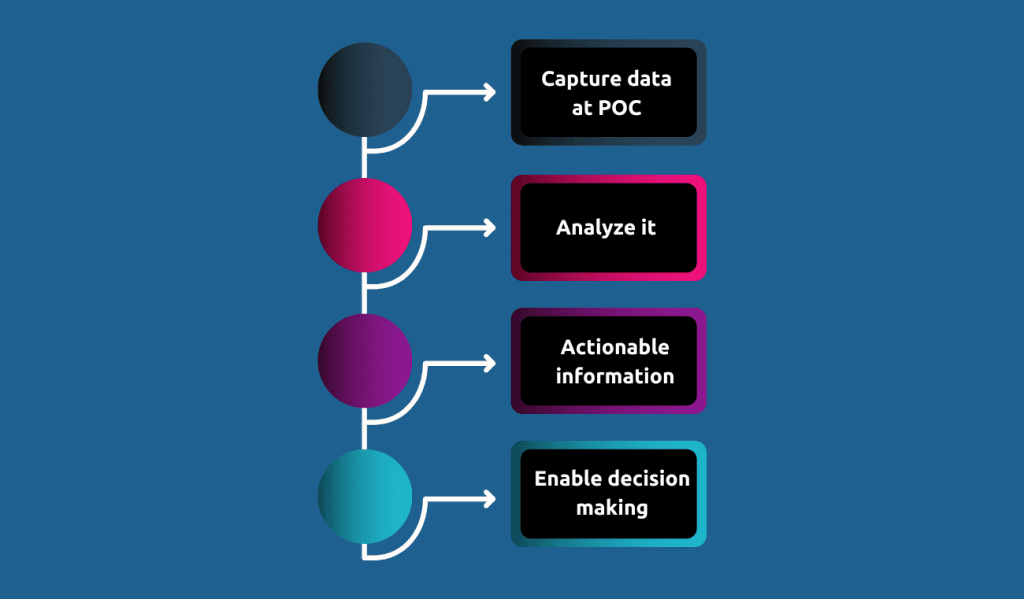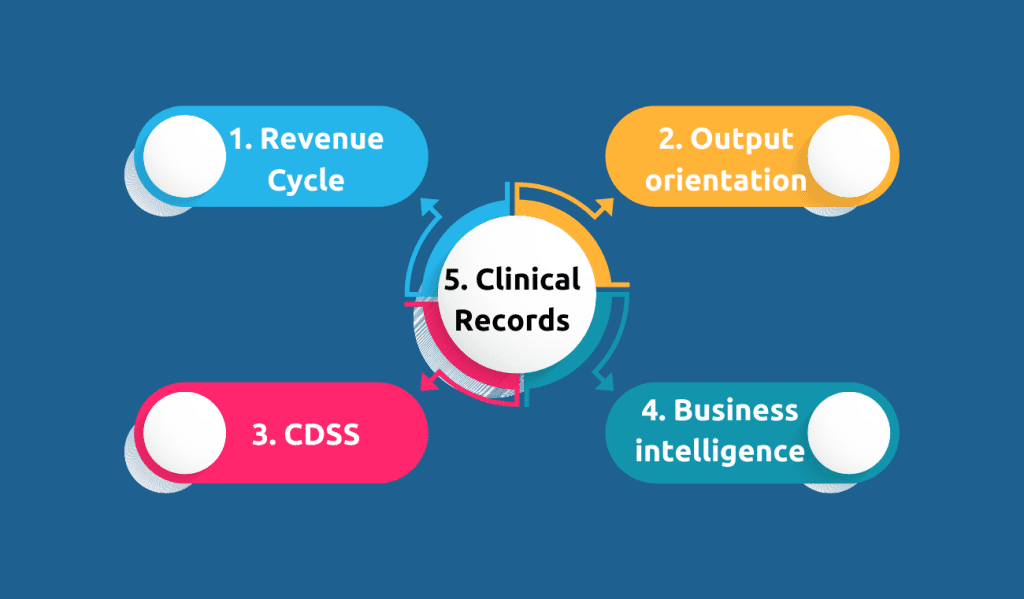Road to Scaling Up Digital Adoption from Ground Zero
Read the Magazine in PDF
Digitization integration should expand beyond patient care and include the functioning of doctors and nurses.
By - Dr Parag Rindani
Abstract
This article discusses the stages of digital transformation in healthcare organizations according to the HIMSS EMRAM healthcare maturity model, which provides a vendor-neutral roadmap for success and offers global benchmarking. The article explores each of the eight stages (0–7) of the model, from hospitals that have not fully implemented digital systems for clinical support units to hospitals that use advanced integrated clinical systems. It also emphasizes the importance of investing in the right computers to ensure long-lasting positive effects on profitability and the need to acquire reliable information systems from the same vendor to ensure easy integration. Additionally, the article discusses the benefits of digitizing clinical notes and medical images for patient care, research, and legal purposes.
Introduction
Understanding the reasons why people choose to use computers and digitize information is crucial. Wockhardt began its journey in 2000 with Wipro for hospital information systems, although this partnership eventually ended.
Differentiating between the use of computers and typewriters is key. While we were taught about input and output devices in school, the processing engine has now changed. With the tools and resources available today, computers can impact more than just a patient’s health, such as by providing business intelligence. By mining this data, computers can become an essential tool for driving change.
HIMSS EMRAM Maturity Models
- The goals for each hospital’s digital health transformation are very specific.
- The HIMSS EMRAM healthcare maturity models provide a prescriptive framework for healthcare organizations to build their digital health ecosystems.
- Each eight-stage (0–7) maturity model operates as a vendor-neutral road map for success and offers global benchmarking.
Every hospital has its own set of objectives. For instance, a small nursing home may only require a printer for laboratory or radiology reports. However, a complex chain of hospitals may focus on clinical research and patient identification to improve research paper publications. Additionally, they may prioritize business and data mining from a business perspective, as well as improving medical and nursing education, public relations, and identifying cases through search engine optimization. Furthermore, they may explore ways to automatically publish certain findings online based on data mining.
Stage 0
This refers to hospitals that have not yet fully implemented digital systems for their main clinical support units, such as pharmacy, laboratory, and radiology.
Typically, when hospitals begin the process of digitization, the priority is to automate billing processes where money is involved. Pharmacies require inventory management, while laboratories and radiology departments must produce reports to receive payment. As a result, there is a process in place to generate a requisition to collect payment from patients before processing tests and producing reports.
The second cautionary note is referred to as the “peroxide caveat,” which suggests that areas that do not require digital output are not easily automated. This is particularly applicable to clinical notes written by doctors and nurses, as they do not necessarily need to be digitized for the patient’s care. Therefore, the digitization of these clinical notes is often neglected.
Assuming that there are hospitals that are currently at this stage, how can we progress them to stage 1? The first step is to acquire a reliable laboratory, radiology, and pharmacy information system. It is best to obtain these systems from the same vendor to ensure easy integration.
The advantages of getting it from one vendor are:
- Your after-sales services will be tracked.
- You will be able to negotiate the cost.
- If that vendor is good, you will be able to upscale from these three modules into more modules, like medical records. biomedical, project maintenance, and clinical decision support systems. So, you must choose the vendor wisely.
Stage 1
This describes the importance of having appropriate digital systems in the main clinical support units of a hospital, such as a pharmacy, laboratory, and radiology.
For these units to function effectively, they require the appropriate tools. For example, if a large hospital expects 25 pharmacists to sell medications to 5000 patients in their outpatient department using only 2 or 3 computers, the CEO should discuss this issue with the board and Chief Information Officers (CIOs). CIOs are crucial in ensuring the success of the business, as they can help increase profits more than any physician or surgeon can. Therefore, CIOS needs to invest in capital expenditures. Without this investment, the hospital will have poor-quality input and output. It is crucial to intelligently invest in the right computers that will have a long-lasting positive effect on profitability.
Stage 2
- Information systems of the clinical data repository (CDR) send all kinds of medical information and results of the patients to a system viewable by the physicians.
- The system sends data to the Electronic Patient Record or Clinical Data Archive, receives feedback and forwards them to the subsystems.
- The system can receive and send medical picture documents and enable information exchange between hospitals.
Stage 3
Integrating clinical documents related to nursing care, such as vital signs, flow sheets, nursing notes, and eMAR, along with electronic medication management records and order entry and tracking systems, is crucial for ensuring seamless integration with electronic patient records and clinical data stored in at least one service process.
At some point, it integrates into stage 4.
- The first stage of clinical decision support may be practised to check the errors in order entry. Drug/drug, drug/food, and drug/laboratory interaction data are usually available in the pharmacy.
- Medical pictures in the picture archive must be accessible from the system’s internet to the physician outside the radiology department.
In this stage, clinical decision support is implemented. However, hospitals can only reach this stage if they invest a considerable amount of money in their profitability, as these systems are costly. At present, 20 hospitals in the country use advanced integrated clinical systems such as Philips ISA or IKA, which are highly recommended. Additionally, it is possible to take pictures of conditions such as bed sores or SLE lesions, which can be linked to patient records for tracking purposes. For example, a picture of a gangrenous wound can be taken on the first day and linked to the patient’s outpatient records to track the progression of a diabetic foot ulcer. This can also be used as evidence in legal proceedings, if necessary. However, a high-quality information technology system with good data transfer capabilities, such as Wi-Fi or LAN, is necessary to transmit images effectively.
Stage 4
- At this stage, the second stage of clinical decision support systems for evidence-based medical protocols is available.
- In this system, any licensed clinician can write an order and add a nurse for their access to data in the Computerised Physician Order Entry (CPOE) system.
- If the Computerised Physician Order Entry system is used in an in-patient service area and previous stages are completed, then the stage is deemed to be completed as well.
A computerized physician order entry (CPOE) is a process where physicians directly input orders into the computer, which helps to reduce errors like transcription errors. Mobile reporting on NABH is done quarterly to ensure quality. At this stage, the second stage of CDSS is rolled out, which involves gradually moving towards Artificial Intelligence.
Stage 5
- Medical images in the full-fledged Picture Archiving and Communication System (PACS) are open to the excess of physicians and sent to other locations via the Internet.
- At this stage, image documents of the cardiology department (ECGs) are entered into PACS systems, and the hospital is given extra points.
This is way more than Stage 0 and Stage 1.
Stage 6
- A full-fledged and marketable physician documentation system is in practice for at least one in-patient clinic. The 3rd stage clinical support system guides all clinical processes.
- Closed-loop medication management systems and coded drugs system are fully in practice.
No human being in the stage touches the system, or you have no human being who recognizes a particular medication. Everything is recognised by the information technology system.
Stage 7
At this stage, hospitals completely avoid using paper documents when delivering services. Instead, all data, documents, and medical images are processed electronically. These digital records are stored and analyzed to improve the quality of healthcare, ensure patient safety, and provide efficient services. The relevant data is standardized electronically, making it easily accessible for authorized individuals and institutions such as management and other hospitals. The hospital guarantees the continuity of all service processes and makes this data available for publication. Although it may be difficult to imagine in India, eliminating the use of paper documentation is not impossible at this stage.
Smart Registration, Admission & Discharge
The following areas are where you can implement the system:

An automated alert is generated when there is a potential drug interaction. CIMS software is integrated with clinical decision support systems and medical administration, creating a complete system. Each drug must have a barcode. Your Medical Artificial Intelligence, which is the CIMS, must be easily accessible. To prevent the administration of toxic drugs, you require a clinical decision support system that checks the laboratory results, such as a patient’s creatinine level, and alerts if the drug is not safe to administer based on the CIMS software.
Smart Critical Care
It is important to recognize that nurses are professionals and not just transcriptionists. Overburdening them with documentation tasks can result in less time for patient care and ultimately lead to problems. Therefore, it is necessary to avoid using nurses for excessive documentation tasks.
In the ICU, various devices such as ventilators, syringe pumps, and monitors are integrated with a real-time monitoring system. This enables immediate alerts to be sent and eliminates any delays, ensuring that no time is lost.
ICCA Overview
This system collects and analyzes all data points in K, providing useful information that can be acted upon and allowing for informed decision-making.

- Capture: The data is automatically captured and stored in this database, which belongs to an 8-year-old patient.
- Analysis: It performs analysis on various data points, such as input and output totals, and can also accommodate infection prevention bundles.
- Actionable Information: This provides information that can be used to take action based on your activities or decisions.
- Equipment Integration: To prevent errors, problems, and legal issues that may arise from transferring data manually, integration involves transferring digital information between machines directly. This clinical support system collects information from the primary source and delivers it directly to the intended recipient, eliminating the need for constant communication. The system, which is used in various ICUs and operating theatres, streamlines clinic workflows and can be customized.
Software-Based Acuity Tool
- Understanding the dependency level and criticality of the patient on a unit
- Nurse patient assignment – shift
- Manpower planning – Annual
The integration of digitization should not be limited to patient care but should also extend to the functioning of doctors and nurses. To achieve this, there are activity-based staffing tools that can be combined with an equity score for patients, as well as nursing care plans, which can be quite lengthy.
Nursing Care Plan
- Incorporate sign reminders on the screen for pending nursing tasks
- Individualised care plans the for patient
Medication Dispensing Systems
- Ensures medication safety
- Access control
- Medication is stored per patient per rack and accessed by an authorised RN
- The cart was replenished by Pharmacist as the er active prescription
- Pre-filled syringe = ease of Administration
How do I scale up?
The initial priority for digitization is anything related to the revenue cycle, followed by items that require an output, such as lab and radiology reports. All such items are entered into the system if they are to be given to someone. In the past, computers were primarily used for typing.
The next priority is implementing clinical decision support systems (CDSS) and utilizing business intelligence to mine data for various purposes, such as enhancing business, refilling pharmacies, and testing diabetic patients.
CDSS can help identify when patients require tests or check-ups, and automated reminders can be sent to patients. Clinical records are usually the last item on the digitization list, while business intelligence moves quickly up to the third place.

This approach can help scale up digitization from scratch, with priority given to items that generate revenue and require an output. Ultimately, a CDSS and business intelligence system can help reduce errors and improve clinical outcomes.
Conclusion:
In order to scale up digital adoption in healthcare, it is important to understand the specific objectives of each hospital and to follow a vendor-neutral roadmap, such as the HIMSS EMRAM maturity models. Hospitals should prioritize implementing reliable systems for their main clinical support units, invest in capital expenditure for profitability, and integrate clinical documents and decision support systems. As hospitals progress through the stages, costs increase, but the benefits to patient care, research, and profitability are significant.





